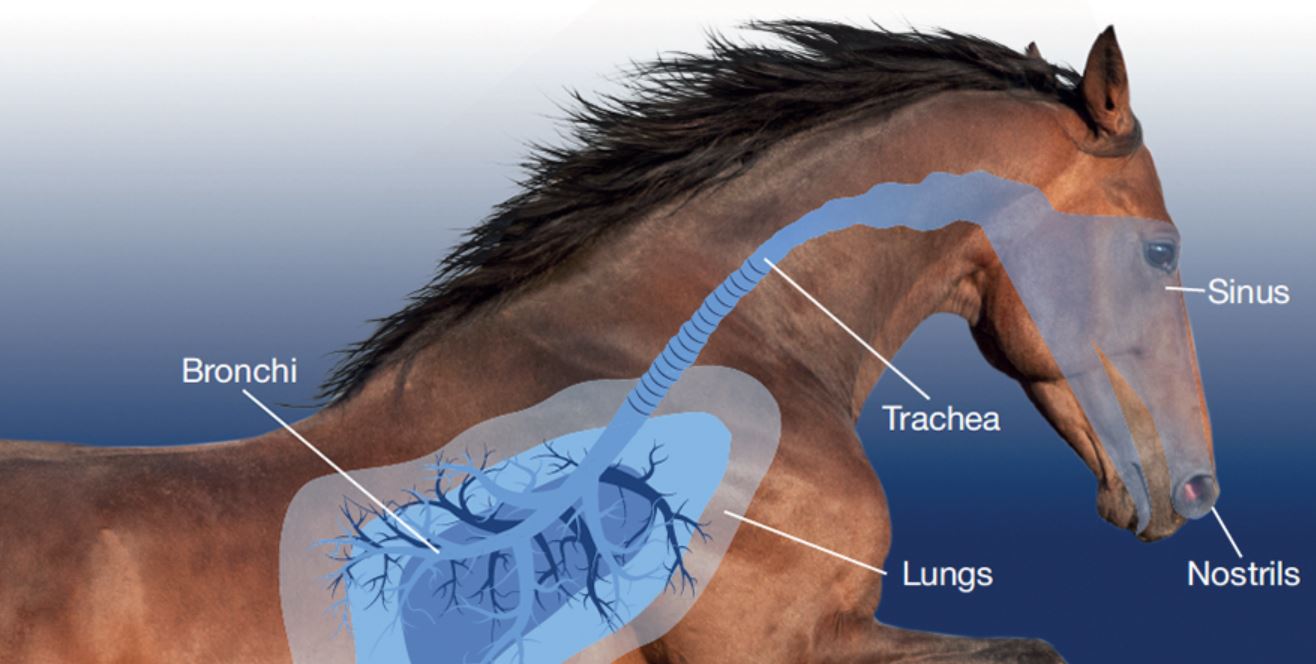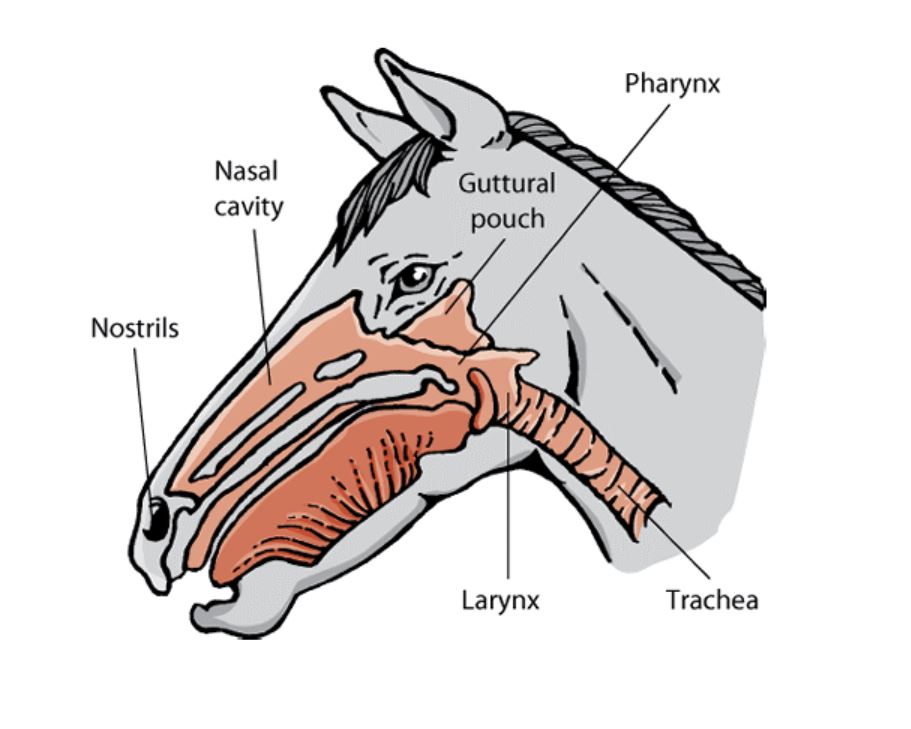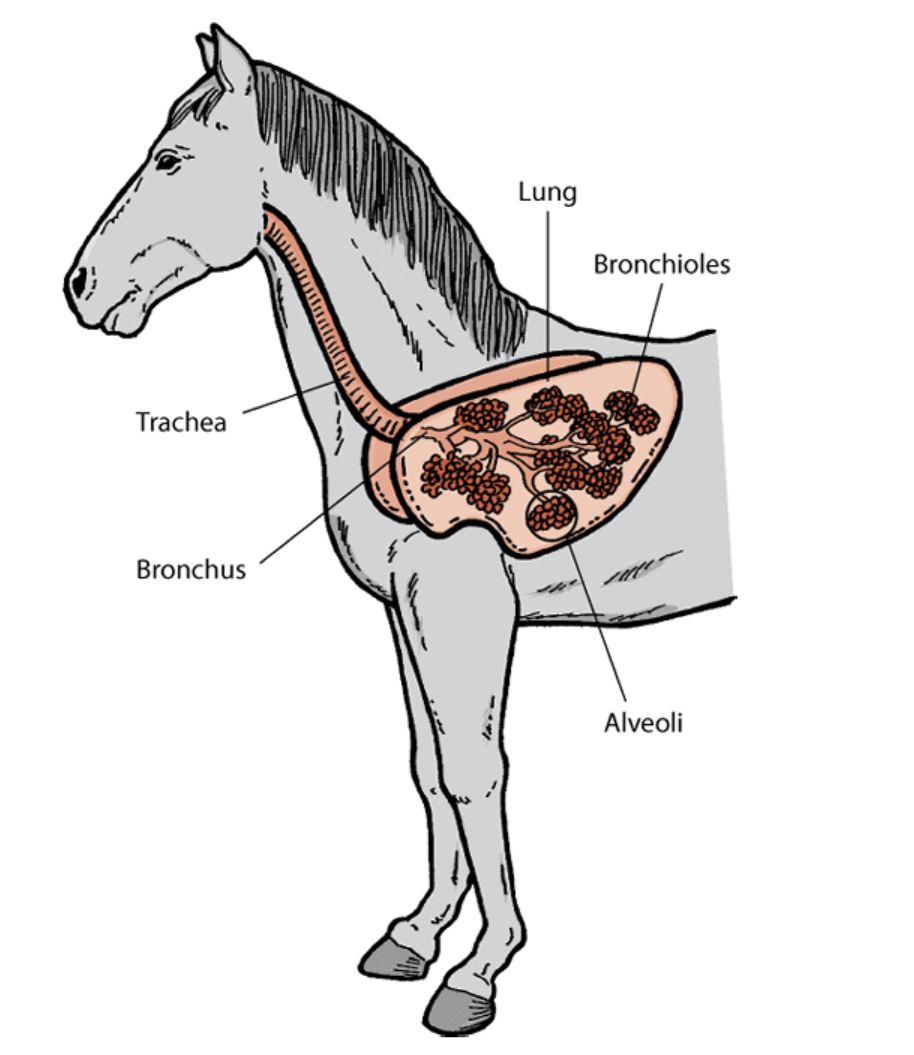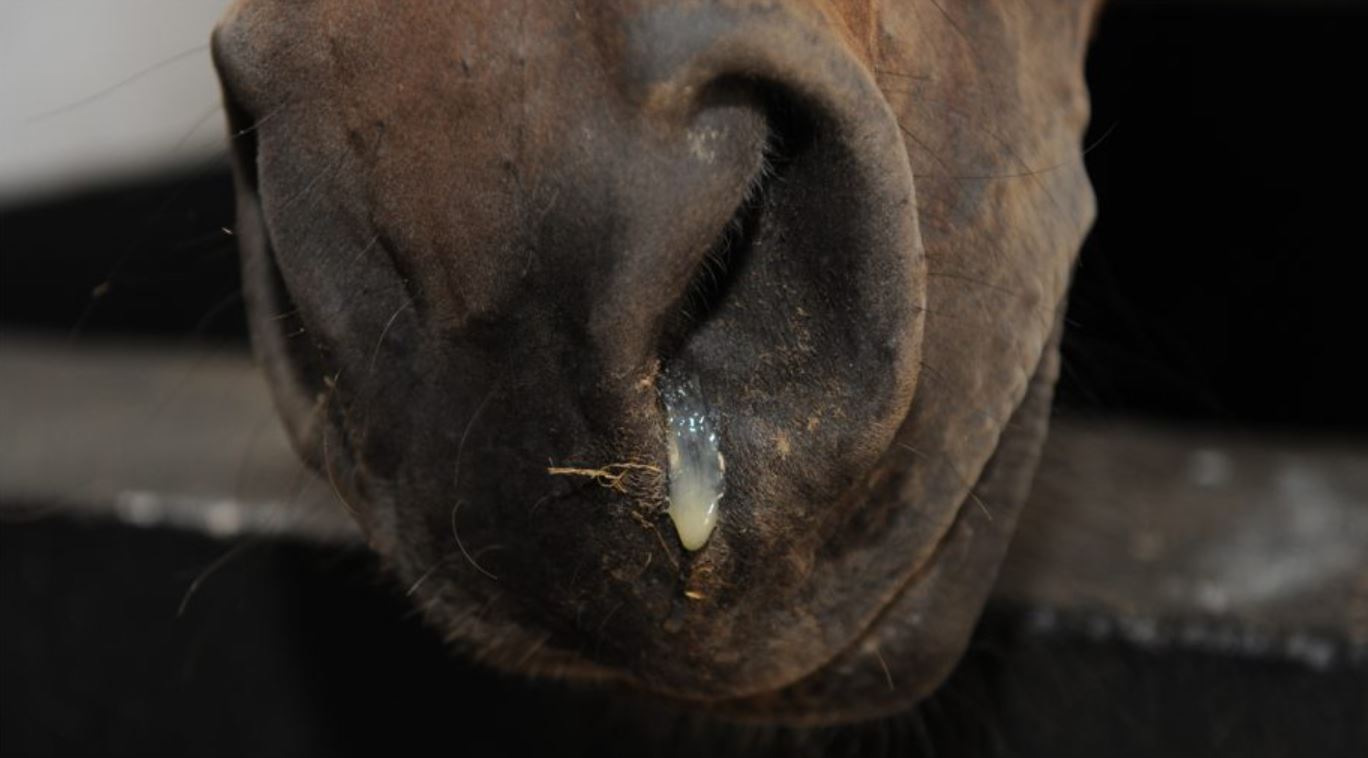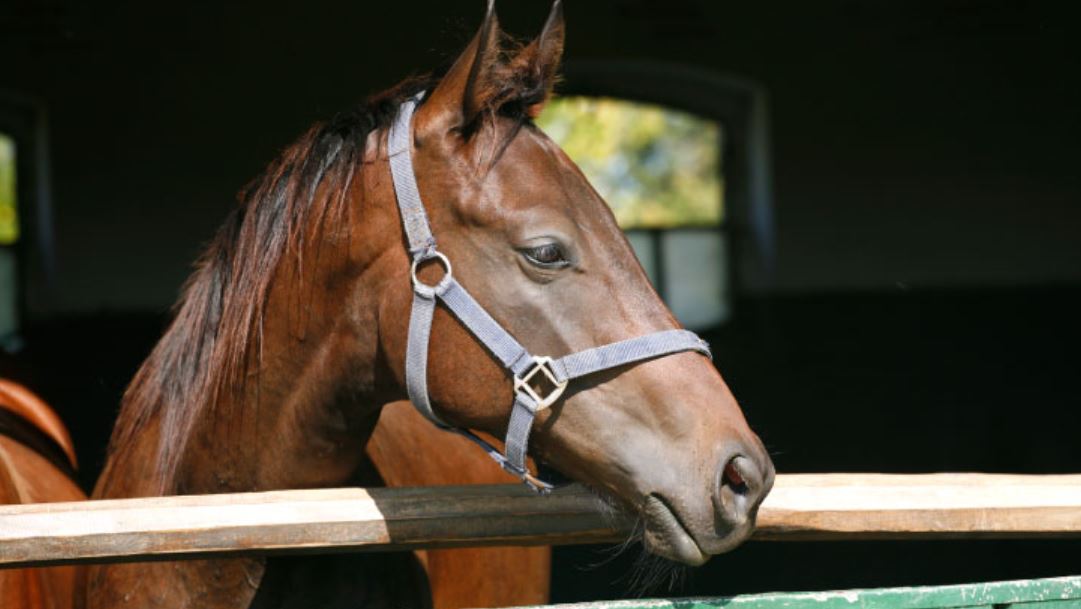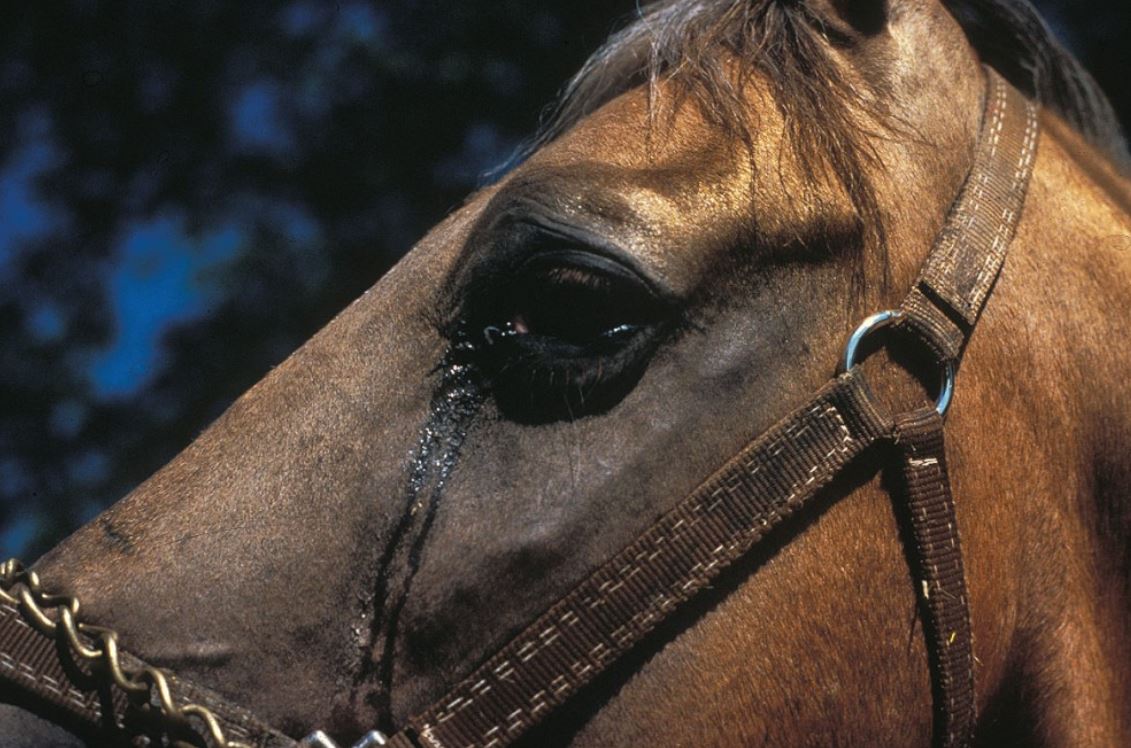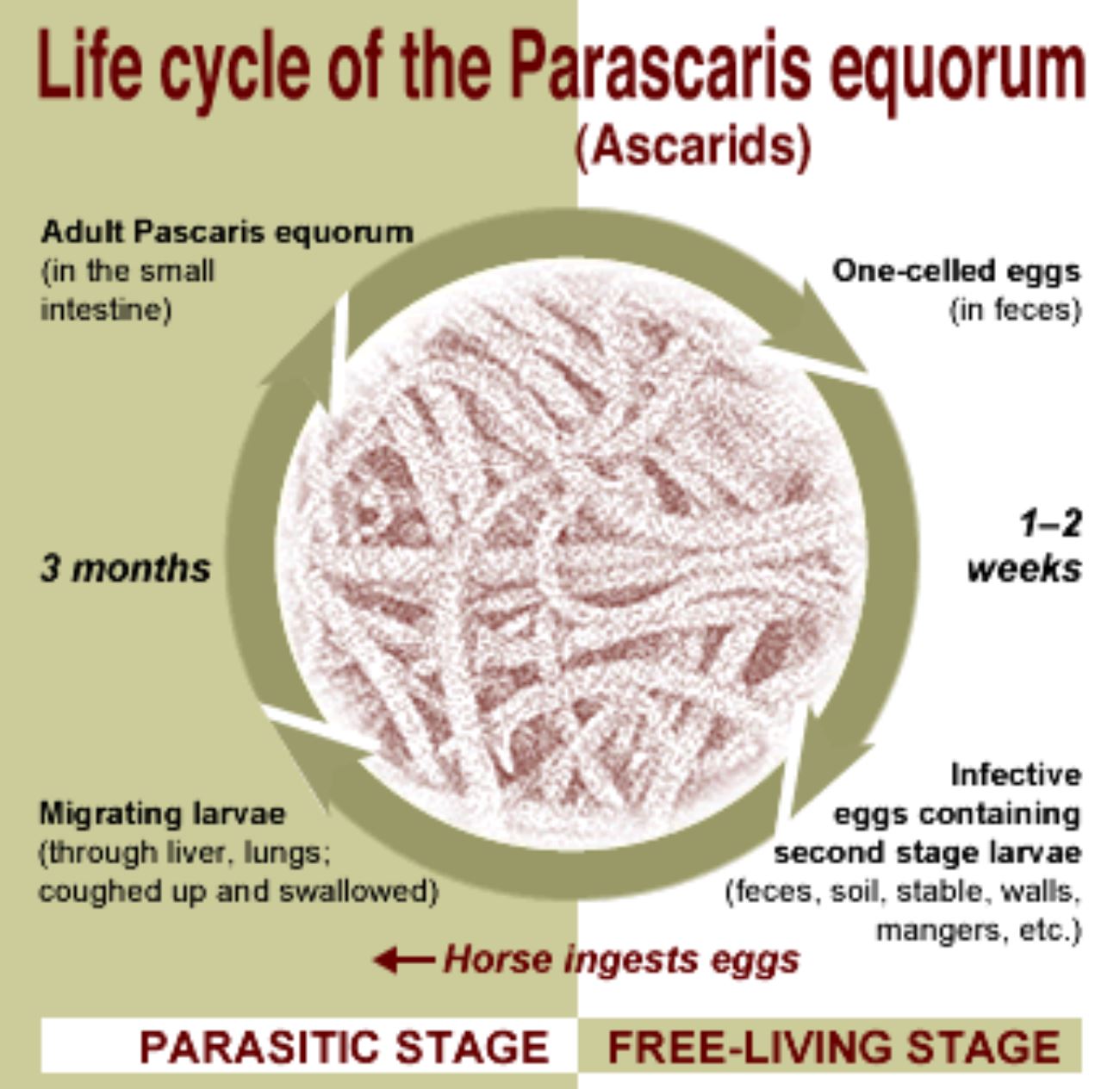- Can Horses Eat Watermelons - September 23, 2023
- How to Get a Horse to Trust You - September 21, 2023
- Best Horse Wormers for Spring Guide - August 10, 2023
I spent many years working as a Stud Assistant on Thoroughbred stud farms in the UK, so I understand more than most people how a horse‘s lungs work. Lungs are the most important part of a racehorse – in full gallop, they can take up to 120 breaths per minute.
Respiratory health is vital to any horse, so if you want to know about a horse’s lungs and how to keep them healthy – I’ll tell you everything you need to know in my horse lung anatomy guide.
In this guide, you can learn about:
- The horse’s lungs and their function
- Common respiratory diseases in the horse
- How to keep your horse’s lungs healthy.
Bottom Line Up Front
A horse’s lungs are in their chest – they’re the largest part of the respiratory system and contain the bronchi, bronchioles, and alveoli. The lungs work with the cardiovascular system to deliver fresh oxygen to the body and remove carbon dioxide, a waste product. Cells need oxygen to function, and breathing is essential to living, so if a horse’s lungs aren’t healthy, it can become seriously ill.
What Do A Horse’s Lungs Do?
A horse’s lungs are the main part of its respiratory system – their job is to bring oxygen into the body and remove carbon dioxide. As a horse inhales through its nose, air passes through the respiratory system into the lungs, where crucial gas exchange occurs.
In the lungs, oxygen from the air passes into the bloodstream via the alveoli into the pulmonary circulation. From here, it circulates all over your horse’s body, replenishing and energizing cells – so they work correctly. At the same time, carbon dioxide, a waste product from the cells, passes into the lungs and works its way back up through the respiratory system when your horse breathes out.
How Do a Horse’s Lungs Work?
If you want to know how a horse’s lungs work, you need to understand the equine respiratory system. The lungs are a major part of the respiratory system, but they don’t work alone. There are several parts of the respiratory system which help purify the air before it reaches the lungs.
We can divide the horse’s respiratory system into two sections:
- The Upper Respiratory Tract (URT) – includes the nostrils, nasal passage, pharynx, larynx, and trachea.
- The Lower Respiratory Tract (LRT) – makes up your horse’s lungs and includes the bronchi, bronchioles, and alveoli.
To give you a clearer idea about how your horse’s lungs work, below, I’ll talk you through each part of the horse’s respiratory system:
Part #1 – The Nostrils
Your horse’s respiratory system begins at their nose every time they breathe. The average horse breathing rate is between 8 – 12 breaths per minute at rest, but this can increase to 120 breaths per minute during intense exercise.
A horse’s nostrils are made from cartilage and muscles, and when they breathe in, the hairs and mucus in the nostrils catch large dust and dirt particles and stop them from going into the throat. Air passes to the nasal cavity from the nostrils and then through to the pharynx.
Part #2 – The Pharynx
The horse’s pharynx is part of the digestive and respiratory system because as well as directing air to the lungs, it also sends food to the stomach.
Horses can only breathe through their nose because, unlike humans, they have a long soft palate which blocks the pharynx from the mouth – the palate only opens when a horse swallows food. Air can’t get past the long pallet, so horses can’t breathe through their mouths.
Part #3 – The Larynx
From the Pharynx, air passes into the Larynx, which is made from muscles and cartilage. It stops food from getting into a horse’s airway. The larynx also contains a horse’s vocal cords and Thyroid gland.
The Larynx allows more airflow during exercise and stops food from passing into the lungs. Sometimes horses can have paralysis in the larynx, and this causes a roaring sound when they exercise. From the larynx, the air will pass to the trachea – the start of the lungs and lower respiratory system.
Part #4 – The Trachea
The trachea is the starting point of the lower respiratory system – it’s a cartilage tube, also known as the windpipe. The trachea warms the air before it enters the lungs and removes dust particles and pathogens with a mucus membrane and hair-like structures known as cilia.
The cilia trap particles and pass them back up to the pharynx, where the horse will swallow them or snort them out. As the trachea reaches the chest, it branches off in two separate tubes, called the bronchi.
Part #5 – The Bronchi and Bronchioles
The bronchi are made from cartilage and smooth muscle, and each one leads into a different lung. As the bronchi reach into the lungs, they branch out into smaller passages called the bronchioles. Bronchioles are made of protein fibers, and they get smaller and smaller as they go deeper into the lungs. The bronchioles branch out from the bronchi like the branches of a tree from its trunk.
Part #6 – The Alveoli
The alveoli are tiny balloon-shaped structures – they’re the smallest part of the respiratory system and sit at the ends of the bronchioles. The alveoli are where the respiratory system completes its cycle when it exchanges oxygen for carbon dioxide.
The alveoli are a single layer thick and covered in tiny capillaries to allow oxygen and carbon dioxide to pass through.
Part #7 – The Pleural Membrane
The pleural membrane surrounds the horse’s lungs to protect them and keep them securely in place. It’s a two-layered membrane which contains pleural fluid as a lubricant to prevent friction.
Part #8 – The Diaphragm
The diaphragm is a large, long, thick dome-shaped muscle that runs the width of a horse’s body and separates the lungs from the abdomen. It helps your horse breathe because when it contracts, it draws air into the lungs, and when it extends, it pushes the air back out – like a pump.
The diaphragm is a powerful muscle, and a horse will breathe in time with their stride when they exercise to help the diaphragm work. Horses take one breath per stride, so as they run faster, they breathe faster.
Common Lung and Airway Disorders in Horses
Respiratory diseases can be a disaster, especially for sports horses. It can damage their lungs, and it takes horses weeks to overcome a respiratory infection. Lung and airway disorders can be expensive to treat and can leave your horse vulnerable to other respiratory disorders.
The most common respiratory disorders in horses are equine influenza, equine herpes virus, and equine viral arteritis. I’ll tell you all about them below:
Respiratory Disorder #1 – Equine Herpes Virus (EHV)
Equine Herpes Virus is the most common respiratory disease in horses, and there are many variations, but the main ones are EHV-1 and EHV-4. EHV can affect the respiratory system and the brain and can cause abortion in pregnant mares.
EHV is highly contagious and can spread through a barn in days. It’s passed on through nasal secretions so horses can catch it through shared buckets, grooming brushes, yard tools, and handlers. EHV can survive in the atmosphere for between a week and a month, but most horses will recover after one or two weeks.
Equine Herpes virus is more common in yearlings, but horses can catch it at any age. Once a horse has recovered from EHV – their natural immunity doesn’t last for long, and they carry the disease without showing any symptoms.
Common symptoms of Equine Herpes Virus include:
- Coughing
- Decreased appetite
- Clear nasal discharge (discharge may become green and thick after a few days)
- Clear eye discharge.
- Swollen lymph nodes
- Fever
Respiratory Disorder #2 – Equine Influenza
Equine Influenza comes from an RNA virus and is most common in the spring and fall. It has a short incubation period of 24 – 72 hours and will quickly spread among horses. The virus spreads through airborne particles from coughing and nasal secretions. Like human influenza, older, younger, or weak horses are more vulnerable to it.
Equine flu damages the lining of the respiratory tract, and it takes horses around three weeks to recover from it, but it may leave permanent damage. The problem with equine influenza is that with the respiratory tract lining damaged, your horse is more susceptible to other respiratory tract infections such as equine pneumonia.
Horses with equine influenza are usually contagious for at least five days after symptoms appear, and their recovery rate will depend on their health and strength when they contract it.
Common Symptoms of Equine Influenza:
- Fever
- Depression
- Anorexia
- Dry cough
- Nasal discharge (clear at first, but it can become thick and discolored)
- Enlarged lymph nodes
- Sore muscles
- Swollen limbs
- High heart rate
- Squinty eyes
Respiratory Disorder #3 – Equine Viral Arteritis (EVA)
Equine Viral Arteritis (EVA) causes respiratory diseases and abortions in horses. EVA has a longer incubation period than most respiratory illnesses – between 3 to 13 days, but it isn’t common in the USA. EVA spreads through nasal secretions, airborne particles, and through fresh or cooled semen of infected stallions. Most breeding and stud horses receive a vaccine against EVA because of the abortion risk associated with it.
Common symptoms of EVA include:
- More nasal and eye secretions than other respiratory diseases
- Depression
- Anorexia
- Swollen limbs
- Abortion
- Inflamed nasal passage.
Respiratory Disorder #4 – Parasites
If you don’t stick to a regular deworming program, parasites such as lungworm and roundworm can invade your horse’s lungs and damage them.
Roundworm is a common horse parasite that affects foals and young horses more than adults. Horses ingest roundworms from their pasture, and the worms migrate around their internal organs from the intestines to the liver and to the lungs.
Lungworm, as the name suggests, can also damage your horse’s lungs. Lungworm isn’t common in horses because they prefer other animals such as cattle, goats, and sheep. Often, donkeys who carry lungworm don’t have symptoms and will pass it on to horses if they share a pasture.
Common Symptoms of parasites in the lungs:
- Coughing
- Nasal discharge
- Anorexia
- Depression
- Sometimes, there are no symptoms.
If you think your horse has a respiratory disorder, isolate them immediately and call your vet for advice.
Tips on How To Keep A Horse’s Lungs Healthy
A horse’s lungs play a huge part in their health, and we all want our horses to be healthy. The best way to keep your horse’s lungs in optimum condition is by reducing their exposure to dust and pollution. This means keeping your stable nice and clean and ensuring they have plenty of ventilation.
There are lots of things you can do to help keep your horse’s lungs in good shape, and if you want to know how take a look at my top tips below:
- Make sure your horse’s stall is well-ventilated and that you remove dust and cobwebs regularly.
- If your horse is sensitive to dust, change to dust-free bedding such as shredded paper, dust-free shavings, or rubber matting.
- Soak your horse’s hay to remove dust before you feed it. You can soak hay in a large water container or with a commercial hay steamer. Always moisten your horse’s hard feed as well if it contains dusty items such as bran.
- Keep your horse’s vaccinations up to date to help prevent respiratory diseases.
- Make sure your horse spends plenty of time outdoors.
- Don’t muck out while your horse is in the stable because it stirs up lots of dust.
- Always isolate new horses for two weeks to ensure they haven’t picked up any infections from transport or their previous barn.
- Water your riding school before you ride if it’s dusty.
- Store hay and straw outdoors to keep dust in the stalls to a minimum.
- Make sure your horse lives in a stress-free environment with a good diet and exercise routine. A healthy lifestyle equals healthy lungs and immune systems.
- Keep pregnant mares separate from other horses, if possible, to reduce their chances of catching respiratory diseases and infections.
- Never feed your horse moldy or dusty hay or food.
- Feed your horse from the ground rather than in a raised hay net. When horses eat with their heads raised, it goes against their natural eating position, so they can’t clear out dust and debris from their food.
How To Keep A Horse’s Lungs Healthy During Transport
To help keep your horse’s lungs healthy during transport, let them lower their head if it’s safe and ensure the trailer is clean and well-ventilated with good drainage.
Horses are particularly susceptible to respiratory stress when traveling in a horsebox or trailer. Trailers are small and stuffy, and your horse is exposed to excess pollution from the traffic on the road. If the trailer is dirty or has poor drainage, ammonium fumes can also affect your horse’s lungs during transport.
If a horse can’t lower their head, which is usually the case during transport, it can’t clear dust and pathogens from its airway. On top of this, horses are generally stressed when they travel, which can lower their immune system and make them more vulnerable to infections.
Conclusion
The primary function of the lungs is to distribute oxygen around your horse’s body and remove carbon dioxide from its system. The lungs play a huge role in your horse’s health, wellness, and athletic performance, and if your horse’s lungs don’t work correctly, it can lead to respiratory diseases and other illnesses.
To keep my horse’s lungs healthy, I always make sure they breathe clean air. I keep their stalls well ventilated and remove dust and cobwebs regularly. If I work with a horse with sensitive lungs, I always soak their hay before feeding it to them.
Horse Lung Anatomy Guide: FAQs
Answer: A horse has a 14.5 gallon (55 liters) lung capacity, and they inhale around 1.3 gallons (5 liters) with each breath while they’re relaxed or resting. The resting breathing rate for horses is approximately 12 breaths per minute, and they can breathe up to 16 gallons (60 liters) of air every 60 seconds.
During exercise, a horse’s respiration rate increases, and at full gallop, some horses will take up to 120 breaths per minute. The average air intake during exercise is around 4 gallons (15 liters) for each breath, so that’s 475 (1800 liters) per minute or 15 – 26 gallons (60 – 100 liters) per second.
A healthy, athletic horse can absorb oxygen from the lungs better than a retired, inactive one, but you can’t increase a horse’s lung capacity.
Answer: The horse’s lungs are in its chest, behind its shoulder, and sit in the ribcage, which protects them. The lungs are located above and slightly forward of a horse’s elbow, and they veer up away from the abdomen towards the spine.
Answer: Horses always breathe through their noses. Unlike humans and many other mammals, they can’t breathe through their mouths. This is because they have a very long soft palate which separates their nose from their mouth. The soft palate only opens when horses eat food and not when they breathe, so it’s impossible for them to breathe through their mouth unless they have an injury or abnormality on the soft palate.
Resources
- “Equine Lower Respiratory Tract – Horse Anatomy – WikiVet English.” WikiVet, en.wikivet.net/Equine_Lower_Respiratory_Tract_-_Horse_Anatomy. Accessed 27 June 2022.
- “Equine Respiratory System: How Horses Breathe – AQHA.” American Quarter Horse Association, www.aqha.com/-/equine-respiratory-system-how-horses-breathe. Accessed 27 June 2022.
- “Respiratory Disease in Horses: Common Types, Significance and Prevention | News | Merck Equine.” Merck Animal Health, www.merck-animal-health-equine.com/news/article/7. Accessed 27 June 2022.
- “Respiratory Problems | AAEP.” American Association of Equine Practitioners, aaep.org/horsehealth/respiratory-problems. Accessed 27 June 2022.
- User, Guest. “How Does the Equine Respiratory System Work?” Flexineb USA | Portable Equine Nebulizer, 17 Nov. 2017, www.flexineb.us/ask-vet-archive/2017/11/13/how-does-the-equine-respiratory-system-work.
- “Your Horse’s Respiratory System.” Horse and Rider, 12 July 2018, www.horseandrideruk.com/expert-advice/articles/horses-respiratory-system/#:%7E:text=The%20trachea%2C%20or%20windpipe%2C%20allows,rings%20that%20prevent%20it%20collapsing.


